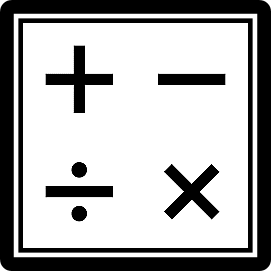How do I interpret speed test results to determine whether my connection is good enough for the University of Phoenix eCampus website?
The simple answer is, it will depend on a great number of factors.
Interpreting whether speed test results are good enough to attend school at the University of Phoenix will depend largely on what is being accomplished. An illustration of this might be, it will take a lot less bandwidth to reach the log in page and access the site, than it would to do something like watching a streaming class video.
That having been said, there are some general points at which it can be almost guaranteed the connection is not the issue, or conversely, the numbers are poor enough that this very well could be an issue.
The items that should probably be examined in a connection test are:
- Download speed
- Upload speed
- Ping
- Packet Loss
- Jitter
While it takes all of these things to make up your connection, some of these numbers are less important than other numbers depending on how far from the norm they are and what type of connection you have. As an example, it is probably pretty obvious what the download and upload speeds are, but having a decent download speed with a high ping and heavy packet loss will not do you much good. This is kind of like looking at the speed a car engine will run, but having no tires on the car for the speed to matter.
So first, let's look at the types of connections to get a feel for what each connection can actually handle when it comes to bandwidth.
The first thing we must consider is that variances in these numbers will have will be largely dependent on where they are occurring within the bandwidth range. We can illustrate this by imagining a runner running at their full speed of 10 miles an hour. The difference of 1 mile an hour only brings the runner down to 9 miles an hour, which is not a huge change overall. If however, the runner is only running at 2 miles an hour and drops 1 mile an hour, he has lost half of his speed. If he loses another mile an hour, he will be at a dead stop. Also we need to keep in mind that there are so many other factors that come into play when looking at bandwidth that are not measurable, we can really only say it is much better to be running at 10 miles an hour than it is at 2 miles an hour, but the more you have, the better, and if you are running at or near the top speed, you are almost certain to be able to absorb these unknowns better. Keep this in mind when looking at the minimums and maximums of these connection types.
The first major modifier of speed that truly makes a difference in these ranges is the type of connection you have.
Dial-up:
- Dial-up internet access is the slowest type of connection available. The connection speed is normally measured at 56Kbps for the best dial-up connections.
- With the amount of data that needs to be sent to and from the University website, it is highly recommended a different internet connection be used. Data transfers will be slow enough that streaming video will not be possible, and upload and download times will be extended enough, that website time-outs may affect the transfer.
DSL:
- There are many DSL connections available, but the main DSL used by residential customers is ADSL, which typically runs anywhere from 128 Kbps (just over twice that of dial-up) to 3 Mbps (essentially 3000 Kbps).
- Why such a huge difference? DSL runs over the phone line. Think of it like a water pipe. It must not only share the pipe with the telephone, but the telephone lines in many areas were laid 50 years ago. &While these lines are encased with a plastic coating, after 50 years (or even 5 years if the casing was nicked), you can imagine how easy it would be for that casing to crack and let water in. Phone lines are made of copper, and if the copper begins to oxidize, it is like a ever-growing clog in the pipe. So if the phone line from the street to the house has diminished capacity, you might see one house with ADSL getting a very low connection speed, while the house next door is rather fast. If the phone line at the end of the street has a problem, the entire neighborhood will had diminished capacity. There is also an interference factor that can come into play. Do you have a certain time period where you can hear something in the background on the telephone? This is some sort of interference, and this will also cause a diminished connection speed.
Cable:
- Cable connections are generally faster than DSL, but can be just as slow, depending on the line. Once again, we have the problem of the line being cracked or kinked too badly and reducing the connection, not to mention interference. Television generally rides along the cable line as well, so this takes up some of the connection speed. This is probably where you want to be to have the most trouble-free connection to the University eCampus website. Does this mean if you have a cable connection everything will run wonderfully? Absolutely not. Cable has more potential than DSL though. Where a phenomenal DSL connection will top out around 10 Mbps, a cable connection can range anywhere from 512 Kbps to over 30 Mbps.
Before we get to satellite connections, we need to discuss two other important factors with connections. Packet loss, ping time and jitter. We will give a brief explanation of what these mean here, and then we will try to explain how they affect your connection later.
Packets - The internet travels in packets of data. Your computer actually breaks everything up that you transfer to the internet into data packets and transmits those packets over the internet. They are then reassembled at the other end and this completes the webpage, uploads the document, downloads the email, etc. Packet loss and ping time are two of the major components that affect connection speed, and they both have to do with the transmission of the packets. They are measured in ms, which stands for milliseconds.
Ping - This is the time it takes for a data packet to get from the starting point to the ending point. So if you are sending an email, the ping time is the time it takes for the data packets to leave your computer, cross the internet, and arrive at the other end, or receiving server (like Yahoo, Gmail or eCampus). Why would this really matter so much? Well, if you remember our runner scenario above, if your ping time is only slightly high, it probably does not matter much, but if your ping time is high already and something affects it even further, it could mean high loading time for webpages, or time-outs when attempting to upload or download. Ping is often measured across all the different internet connections that your information packets take on their way to their destination. The time involved (usually as a measure of the round-trip to the receiving computer and the response back to your computer), is called network latency.
Jitter - Now that we know what ping time and latency is, jitter is simply just the variation in ping time it takes for packets to go back and forth. So if we have a ping time of 10 ms, it took our packets 10 milliseconds to get from our computer to the destination computer. We do not just send one packet though. We send hundreds, thousands, even millions. So if one packet is 10 ms but the next packet is 100 ms, and the next is 1000 ms, the jitter is going to reflect the differences in those times. Why is this important? Because if you ran your speed test and found your ping time was 10 ms, it is just a snapshot of your connection at that time. The jitter will show how the ping time is performing over a period of time, based on the lowest number detected and the highest number detected.
Packet Loss - Packet loss is simply packets that do not reach their destination and have to be resent. We know the internet travels in packets, but what happens if, with all the traveling, a packet does not reach the other end? The actual answer is, the other end says, "Hey, I missed a packet. Please resend it." Obviously, this all happens at a very high rate of speed. So if there are a million packets and two are "dropped" (which is what it is called when a packet just disappears on its way to the destination), that will never be noticeable. Imagine if 1000 packets are sent and 500 need to be resent. First the receiving computer has to wait to make sure they are not coming at all. Then it has to send the request, and wait for your computer to respond with the resent packets. This can take some time. Again, we are talking in milliseconds, but even in milliseconds, having to resend half of everything that was originally sent can cause quite a few issues.
Satellite:
- Satellite normally runs between 1 Mbps and 20 Mbps. Notice the huge difference in those numbers. This is one of the trickier connections available. To understand how satellite is advertised as being fast, we have to look the actual definition of fast.
- Imagine two pro baseball pitchers. One throws his fastball to the other across the yard. Pretty fast right? But what if one pitcher was in the next city over (and could actually receive a ball thrown from the other city)? Think for just a moment; the pitcher is actually still throwing his fastball at the same speed, but the distance it has to travel is causing it to take much longer to reach the other guy. This is often what happens with satellite. The speed is fast. You have a pro baseball pitcher connected to your computer. The problem is the ping time, or how long it takes for each of your packets to reach the receiving computer. Why is this a real problem? Well first, it is 88,000 miles to get up to the satellite and come back down again. You also have transmission issues, like rain or clouds, or the interference of maybe a plane passing by transmitting on a frequency that interferes a bit. If you have ever watched a news broadcast where the anchor speaks with someone in another country and it takes them a moment to hear the question and respond, you are seeing where the latency in a satellite connection comes into play. Now in our example that is only the connection back down to earth from the satellite; the information packet is still at the satellite service company. It still has to go all the way through the internet just like any other connection would. Your packet finally reaches its destination. Now that computer has to send information back to your computer, and the whole process starts all over again. Does not mean satellite connections are bad? Absolutely not, it means there is simply a greater chance for issues to creep into the connection and for the service to vary more because of these issues.
In the same vein as satellite, we must also talk about using wifi connections and hot spots.
Wifi:
- It is important to recognize that even though your wifi connection from your router to your laptop is only a short distance, you have electrical wiring, walls with metal in them, not to mention the router itself is generally not that powerful. Try going to your neighbor's house and connecting to your wifi router from there; it will almost certainly be a mediocre to poor connection.
Hot spots:
- The same thing applies to hot spots. We talked about the extra distance added on concerning the regular internet, once the packets get up to and back down from the satellite on a satellite connection, well now add the cellphone network onto that. When dealing with a hot spot, you are actually dealing with several different major connection interruption possibilities. First there is normal cell phone interruption potential. If you have a smart phone and you have ever installed an app, you know that transferring data over the cell phone network can actually take a bit of time. Now couple that with the fact that once your connection gets all the way through the cell network, you still have the internet to go, and then back through it all again. Once again, this does not mean a hot spot is necessarily a bad connection. 4G can be a really fast cell network connection, but remember the analogy with the pitcher? Just because the pitcher is throwing a fast ball does not mean there is not a lot of distance the ball needs to cover.
In summarizing the differences between connections, all connections can be plagued with packet loss, latency (high ping time) and high jitter. Your connection can overcome a number of these items. The key is where the connection speed starts (how fast it is to begin with), and how many and how bad each of these other factors there are.
Download and Upload speed:
- When running a speed test, you will be given two numbers. Your download speed and your upload speed. We call this the down and the up, so if your numbers are 24 Mbps/ 1 Mbps, this is normally stated as 24 Megabytes down and 1 Megabyte up, or if you are a tech, 24 down and 1 up.
- In most cases, the upload speed will normally be much slower than the download speed. Since most of the time, you are worried about information coming into your computer (loading websites, downloading email, displaying pictures) over leaving the computer, the download speed will be the initial number you will want to examine and it will almost always be quite a number of times higher than the upload speed.
Hopefully it is apparent throughout this article that it is quite complicated to put an actual minimum speed necessary to access the eCampus website.
If this is still not quite enough for you and you would like to at least have a general range in mind, a very general speed that, with all other factors good, should allow you to perform most if not all the various tasks on eCampus is 3 Mbps down and 1 Mbps up. If you are running at least 3 down and 1 up, you should have a good chance of everything on the student website running the way it is intended to run.


